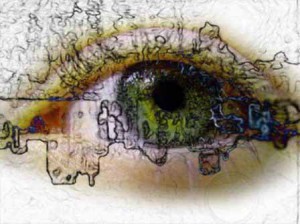Wake-up Sermon, part 3
Whoever knows that the mind is a fiction and devoid of anything real knows that his own mind neither exists nor doesn’t exist. Mortals keep creating the mind, claiming it exists. And Arhats keep negating the mind, claiming it doesn’t exist. But bodhisattvas and Buddhas neither create nor negate the mind. This is what’s meant by the mind that neither exists nor doesn’t exist. The mind that neither exists nor doesn’t exist is called the Middle Way.
The Middle-Way refers to the self-realization that the Unborn Buddha Mind defies any conceptual reference point. The Dhammapada asks, “Can the transient mind recollect Mind?” How can something devoid of Self, and hence inadequate, ever hope to measure-up to the full-stature of That which is Prior to all aggregated existence? Mind Recollects Mind. Mind is neither created nor negated but THAT which is Uncreate and undefiled.
To see nothing is to perceive the Way, and to understand nothing is to know the Dharma, because seeing is neither seeing nor not seeing and because understanding is neither understanding nor not understanding. Seeing without seeing is true vision. Understanding without understanding is true understanding.
True vision isn’t just seeing seeing. It’s also seeing not seeing. And true understanding isn’t just understanding understanding. It’s also understanding not understanding. If you understand anything, you don’t understand. Only when you understand nothing is it true understanding. Understanding is neither understanding nor not understanding.
Bodhidharma asserts here that “understanding” is a much misused and actually—“misunderstood”—term. Trying to “perceive” the Way of the Buddhadharma through the dim-light of understanding is, in the final run, understanding nothing. Understanding in itself is a mere cognitive trick of trying to perceive and then understand something that really doesn’t exist in the first place. Seeing through imageless-eyes the Dharmadhatu is true vision. True understanding is seeing through the clear-light of no-understanding. Saying “I understand” means that you misunderstand understanding. When one can say, “I understand nothing” is when one actualizes their understanding. To perceive the Buddhadharma is the Way of no-perceiving.
The sutras say, “Not to let go of wisdom is stupidity.” When the mind doesn’t exist, understanding and not understanding are both true. When the mind exists, understanding and not understanding are both false. When you understand, reality depends on you. When you don’t understand, you depend on reality. When reality depends on you, that which isn’t real becomes real. When you depend on reality, that which is real becomes false. When you depend on reality, everything is false. When reality depends on you, everything is true. Thus, the sage doesn’t use his mind to look for reality, or reality to look for his mind, or his mind to look for his mind, or reality to look for reality. His mind doesn’t give rise to reality. And reality doesn’t give rise to his mind. And because both his mind and reality are still, he’s always in samadhi.
It’s a matter of perception. What you apparently understand is based on your perception. Perception is an arbitrary vehicle—it varies from mind to mind. What you perceive reality to be is really based on your own perceptional apparatus and thus you determine reality to be what you want and perceive it to be. When you turn-off your understanding-perceptional-apparatus then you learn to see Reality As It Is—devoid of your own inadequate skandhic-filtering that mistakes the true to be false and the false to be true and reality for unreality. Deep samadhi is when both mind and apparent reality are absent; or, the Still-Dharma-Mind is Samadhi.

